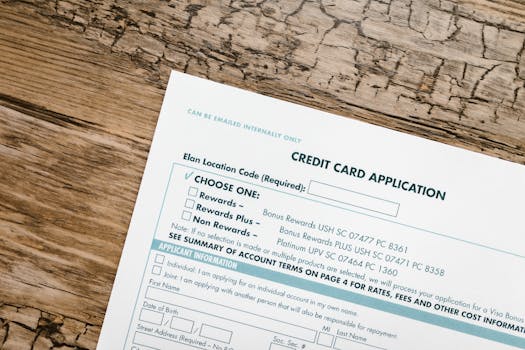Investing basics
How Rebalancing Keeps Your Portfolio Healthy and Resilient
Learn the art of portfolio rebalancing with proven steps and examples that help you manage risk, curb stress, and keep your investments in line with your personal financial goals.
Advertisement
Many feel confident after selecting investments, yet soon realize the ratios inside their portfolio can shift on their own. This is where portfolio rebalancing becomes essential to keeping your plan steady, regardless of market swings.
Ignoring changing weights can turn a cautious investor into an accidental risk-taker. When you understand how your allocations drift, you see why disciplined rebalancing keeps your portfolio healthy and working toward your goals, even when emotions say otherwise.
Digging deeper, you’ll find practical approaches in portfolio rebalancing that don’t require complex math. This article will share real-world scenarios, sample steps, and explain exactly how regular rebalancing preserves long-term stability for any investor’s plan.
Staying Aligned With Your Personal Investment Targets Maintains Control
Choosing your desired mix of stocks, bonds, and alternative assets sets a target to hit. Rebalancing helps ensure you regularly return to that target so market shifts don’t rewrite your investment plan for you.
If stocks outperform, your portfolio will slowly become riskier by accident. Through portfolio rebalancing, you actively resist that drift and keep your risk profile level and familiar.
Market Shifts Mean Your Portfolio May Drift
A 60/40 stock-to-bond portfolio might turn into 70/30 after a bull market. Those numbers signal your exposure has changed, even if you didn’t buy or sell a thing on your own.
Unaddressed drift often lulls investors into false confidence. For example, you may believe you still have a balanced portfolio, only to face larger losses during downturns due to higher stock exposure.
To get back on track, set calendar alerts or visual reminders for portfolio rebalancing. Checking quarterly, semi-annually, or yearly keeps allocations close to your original blueprint.
Deciding On Thresholds Puts You In The Driver’s Seat
Some investors establish a “5% rule”—they rebalance whenever any asset moves five percentage points away from its original allocation. This process ensures you take control, not the market’s latest volatility.
Clear trigger points help you act without second-guessing or emotion. For instance, if bonds grow to 50% but your target is 40%, the 10% difference is your cue for action.
Using written goals or a checklist is a proven portfolio rebalancing tactic. That way, you make decisions based on math and strategy, not headlines or hunches.
| Scenario | Original Allocation | After Market Change | Takeaway |
|---|---|---|---|
| Stock surge | 60% stocks / 40% bonds | 70% stocks / 30% bonds | Reduce stocks, buy more bonds to restore balance |
| Bond rally | 60% stocks / 40% bonds | 55% stocks / 45% bonds | Sell bonds and add to stocks at next review |
| Cash infusion | 50% stocks / 50% bonds | 60% stocks / 40% bonds after buying more stocks | Invest new funds to match your target allocation |
| Dividend reinvestment | 55% stocks / 45% bonds | 58% stocks / 42% bonds due to new shares | Adjust future dividend allocations or rebalance |
| Market decline | 65% stocks / 35% bonds | 50% stocks / 50% bonds after stock dip | Sell bonds, buy stocks to rebalance |
Key Steps To Make Rebalancing Routine, Not Stressful
Following a planned routine for portfolio rebalancing eliminates guesswork and helps you execute with confidence regardless of news headlines or short-term anxiety.
Organizing your rebalancing efforts means less overthinking and more consistent investing behavior. Just as an annual check-up keeps you healthy, regular reviews are basic portfolio self-care.
Set Dates for Frequent Check-ins
Pick fixed calendar dates—say, every June or December—to review your allocations, regardless of market mood. This structure minimizes the temptation for emotional buying or selling.
Too frequent reviews may invite unnecessary trades, while waiting years can turn small drifts into big unwanted risks. Choose a timeline that matches your investing goals and portfolio size.
- Mark the same date each year for your portfolio review. You’ll build a sustainable habit and avoid impulse-driven changes.
- Always document any changes. Keep a simple spreadsheet or journal noting actions and rationale for transparency and learning.
- Automate reminders with a digital calendar or investing app. This lowers your mental load and ensures you won’t forget during busy weeks.
- Separate review dates from big news events. Don’t let headlines drive your check-ins. Reliability is what maintains the plan.
- Review all accounts, not just your main one. Move across IRAs, 401(k)s, and even taxable brokerage accounts for a holistic check.
When routines become ingrained, rebalancing feels less like a chore and more like part of invested living.
Use Threshold Bands to Reduce Frequent Trading
Threshold bands—like rebalancing only when an asset drifts outside a specific range—cut down on unnecessary trades. For example, let a 60% stock position swing between 55% and 65% before acting.
This approach minimizes transaction costs and taxes while still catching meaningful allocation changes. Many long-term investors use bands for simplicity and efficiency.
- Choose percentage bands wide enough to limit micro-trades, but not so wide you’re exposed to big unintended risk shifts.
- Stick to your rule every time. Consistency beats perfect timing—don’t scrap the plan for fleeting news or market moods.
- Combine bands with calendar dates to balance discipline and flexibility. Review on schedule, but only rebalance when bands are triggered.
- Monitor costs and taxes. Larger trades might bump you into higher brackets or fees, so plan the order of sales thoughtfully.
- Review your bands yearly as your risk tolerance changes. Adapt the system to fit your age, goals, and portfolio complexity.
These rules empower you to act on facts instead of feelings, turning portfolio rebalancing into a smart habit for decades.
Real-World Scenarios Of Drift And Correction Show Benefits Clearly
By seeing actual scenarios where portfolio rebalancing corrected real drift, you gain perspective on the practical benefits and immediate consequences for risk and return.
Whether markets soar, crash, or only move a little, deliberate rebalancing responses create outcomes you can anticipate and shape going forward.
Stocks Skyrocket And Tip The Scales
Imagine a friend who set a 60/40 portfolio in 2020. With stocks soaring in 2021, their balance shifted to 80/20, far more aggressive than intended. “Should I just leave it?” they ask.
Taking action here—selling enough stocks to return to target—locks in gains and brings the risk level back to Earth. The friend is relieved after executing this simple move without delay.
Copy this step: Check current weights. If any holding is more than 5% away from plan, reset by transferring from the overweighted area to the underweighted spot.
Bond Rally Offers Unexpected Opportunity For Adjustment
Sometimes, bonds outperform unexpectedly. A person building for retirement found their 30% bond slice grew to 40% over two years. They felt torn between riding it out and correcting.
After discussing the case, they rebalanced by selling some bonds and buying stocks, reducing risk of missing future stock market growth. They noted relief at maintaining their intended strategy.
If a segment grows beyond plan, trim from that position methodically—don’t wait for further surprises. Portfolio rebalancing is a tool for discipline, not for guessing trends.
Compounding Advantage Through Discipline And Habit
Building steady investment habits compounds your results over years. By sticking to a set schedule and portfolio rebalancing process, investors earn smoother returns with less drama.
Even when performance feels lopsided, a dependable routine offers psychological and mathematical benefits that grow exponentially through decades.
Minimizing Emotional Whiplash During Market Surprises
Frequent market surprises can push emotions to the forefront. Setting a clear rule for portfolio rebalancing ahead of time is like fastening your seatbelt before a bumpy road trip.
Discipline in the face of volatility leads to fewer reactionary trades and greater peace of mind. Research shows routines lead to fewer stress spikes during downturns.
If a major headline urges you to act, double-check whether it fits your predetermined plan. Only execute changes on your calendar or based on drift thresholds—never from impulse.
Turning A Chore Into A Lifelong Wealth Habit
When rebalancing becomes routine, you treat it much like dental hygiene—you don’t debate, you do it on schedule. This builds reliable wealth habits that serve you quietly year after year.
For example, one investor set calendar invites every June and December. Each time, they spent one hour reviewing, adjusting, and documenting their moves, always using the same system regardless of noisy headlines.
Copy this by integrating rebalancing into a life routine—pair it with annual tax prep, a birthday, or the start of each year. Let autopilot foster comfort and consistency in your finances.
Keeping Costs And Taxes Low While Rebalancing Smartly
Well-planned portfolio rebalancing includes strategies for minimizing the bite from transaction fees and taxes. Smart execution preserves more of your returns without undermining your plan’s discipline or intent.
Clarity on costs makes your process more effective and less stressful. Planning ahead for taxes means no surprise bills, and often more money working for your goals.
Optimizing Order Of Trades To Minimize Costs
One good practice is to use contributions and withdrawals to rebalance first. For example, direct new investment cash toward underweighted assets immediately rather than trading existing holdings.
When possible, use tax-advantaged accounts—like IRAs or 401(k)s—for trades, since rebalancing inside these shells typically doesn’t trigger immediate taxable events or capital gains.
In taxable accounts, sell positions with least gains first, or offset gains with losses elsewhere. Track your realized capital gains to avoid bumping into higher tax brackets unexpectedly.
Tax-Loss Harvesting And Its Role In Rebalancing
Sometimes, rebalancing will require selling an asset at a loss. In these situations, tax-loss harvesting lets you turn that stumble into a tax advantage come filing season.
If your international stocks dipped but your US stocks boomed, you could sell the lagging position, take the deduction, and redirect funds to realign allocations.
Be mindful of wash sale rules, which prevent repurchasing the same security within 30 days of a loss claim. Instead, look for similar alternatives or add to other lagging asset classes.
Turning Knowledge Into Action: Your Next Portfolio Step
Embracing portfolio rebalancing delivers practical, measurable benefits over time: greater risk control, smoother returns, and less anxiety. Think of it as a tool to keep your money in shape for whatever comes next.
Your portfolio should support your goals, not surprise you with new risk when you least expect it. The art of rebalancing lets you update the plan, not just passively ride the market.
Next time you check your investments, remember: a simple rebalancing process can be the difference between drifting off course and steering steadily toward your destination—on your own terms, year after year.





